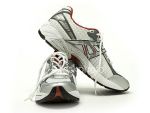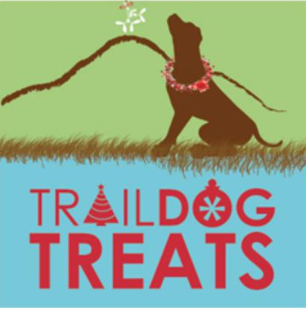Running Dogs
 Looking for the perfect training partner, one who can motivate, who can keep up the pace, and who is always enthusiastic? Look no further than a dog!
Looking for the perfect training partner, one who can motivate, who can keep up the pace, and who is always enthusiastic? Look no further than a dog!
There are many reasons why dogs make ideal running partners. They have a natural athleticism and a joy of running that can be inspiring runners of all levels. I’m fortunate to have a great running partner in Tatum, as her work ethic & running enthusiasm can’t be beat! She looks forward to our weekly outing with my neighborhood run club, and has successfully completed a handful of doggie running races.
A well-exercised dog is not only a happy dog, but also a healthy one. Running provides a mental and physical stimulation necessary for a dog’s well being, increasing their endorphins and helping to keep the unwanted pounds off. Dogs live for human contact, and running is a great activity to bring the two of you together. Some breed types make better running companions than others. You’ll find a large variety of breed options to choose from if you’re the type of runner who typically runs shorter distances at a slower pace (10-12 min per mile). If you run more like 5-10 miles in an outing at a faster pace (8 min per mile or faster), you’ll want dog that’s athletic, energetic, and built for speed.

Compared to people, dogs dissipate heat poorly. Breeds with long hair, or are large or overweight have a harder time dealing with hot temps compared to shorthaired, smaller, and more slender dogs. Those with flat noses, like Pugs and Bulldogs, have a more difficult time getting enough air as well as dissipating heat. Dogs that are best suited for running, and probably easiest to run with are those who are above your knee height. Shorter dogs are easier to trip over! Sporting breeds such as German Shorthaired Pointers, Vizslas, and Weimaraners make the best runners. These dogs tend to be able to go long distances and get into the zone with a steady trot. Dogs who are 30 – 60 lbs (Border Collies, Standard Poodles & herding breeds) are generally athletic enough to run well, as are America’s most popular breed — Labs!
Before hitting the trails/pavement with your dog, it’s important that he/she is in optimum health and good physical shape. They need to be trained in basic heeling skills to avoid injury and discomfort for you and your pooch. Although, this is an ongoing battle with Tatum, as she has the tendency to go full speed ahead, pulling & pushing me to challenge myself with a faster than normal pace. We’re working on that…
As far as food consumption, it’s best not to feed your dog right before or after a run, but small treats can be helpful enticements during the run. Tatum’s Trail Mix makes for the perfect “on the go” running snack!
All in all, you need to pay attention to your dog while you’re running together. If he or she seems thirsty, stop for a water break. If their paws seem sore from the pavement, slow down and let your dog run on grass or in the shade. Be mindful of your dog’s condition as well as your own, and you’ll both have a positive outing!
Archives
Post Categories
- Blog (2)
- Dog Treats (8)
- Dogs (19)
- Events (5)
- Health & Fitness (8)
- Small Business (3)
- Travel & Lifestyle (13)
- Uncategorized (46)
Popular Post
Do What You Love
Holiday Treats, Gifts, Markets, oh
Thanks for your continued support
Email for newsletter
© 2022 Trail Dog Treats. All Rights Reserved.




